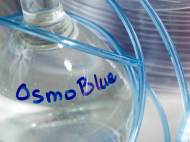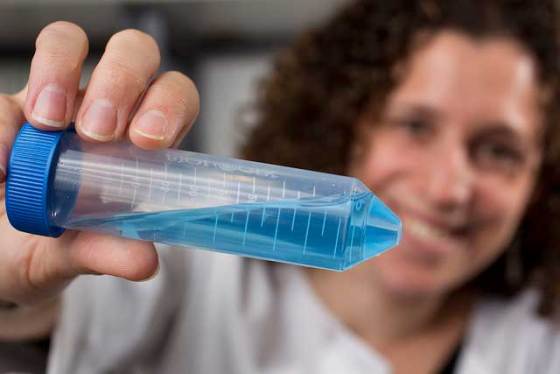OsmoBlue technology uses osmosis to convert excess heat into electricity
 According to some studies, between 20 to 50 percent of consumed energy is dispersed as heat. Although there are methods to utilize heat over 150°C (302°F) to produce electricity or to heat homes, the rest is simply released into the environment. The start-up OsmoBlue, based in EPFL’s Laboratory of Microsystems, developed a process based on the principle of osmosis to convert heat over 30°C (86°F) into electricity.
According to some studies, between 20 to 50 percent of consumed energy is dispersed as heat. Although there are methods to utilize heat over 150°C (302°F) to produce electricity or to heat homes, the rest is simply released into the environment. The start-up OsmoBlue, based in EPFL’s Laboratory of Microsystems, developed a process based on the principle of osmosis to convert heat over 30°C (86°F) into electricity.
The method employs osmosis – a natural phenomenon that occurs when the concentration between two solutions separated by a membrane differs. A stream flows from the less concentrated to the more concentrated solution, which tends to balance the concentrations on each side of the membrane. The mechanical energy of this stream can be converted into electrical energy by a turbine and an alternator.
Heat is again used to separate the fluid into two separate solutions, one of which is more concentrated than the other. It is, therefore, a closed circuit that does not consume water. Though this concept has attracted significant investment, it has struggled to become a reality due to low yields.
OsmoBlue overcomes the current limitations of PRO using a simple and novel approach. The OsmoBlue technology is advantageous because it can be implemented with any heat source – air, water, gas or steam. The efficiency of the machine is both dependent on temperature and the nature of the hot and cold sources. Connected on one side to the heat source and the other to the power grid, modular systems could eventually be installed near existing structures.
During the course of her postdoctoral fellowship at Harvard University in the United States, Elodie Dahan had the idea to revisit the method of osmosis. With a team of seven people, the young entrepreneur has completed a digital laboratory demonstrator and a digital model for evaluating the performance of the product.
“For example, it allowed us to estimate that 10 megawatts of heat could produce between 100 and 600 kilowatts of electricity, the consumption of one hundred homes”, said Dahan, co-inventor of the OsmoBlue Technology.
First prototype which utilizes the OsmoBlue Technology is currently being manufactured at EPFL, and a pilot unit on a larger scale could then be installed in a regional waste incineration company in 2014. The technology could be used to produce electricity from heat over emitted from waste incinerators, refineries, or data processors.










Leave your response!